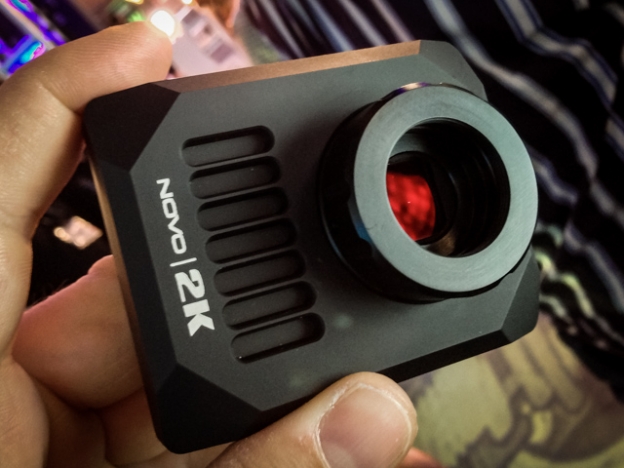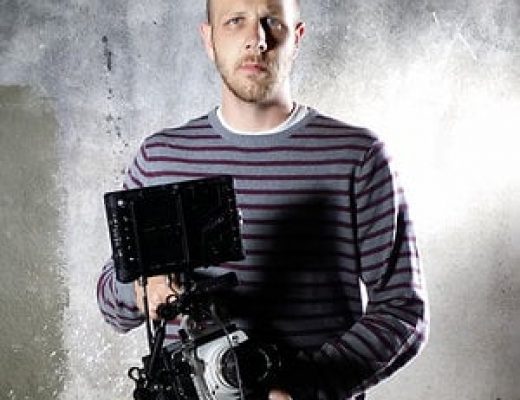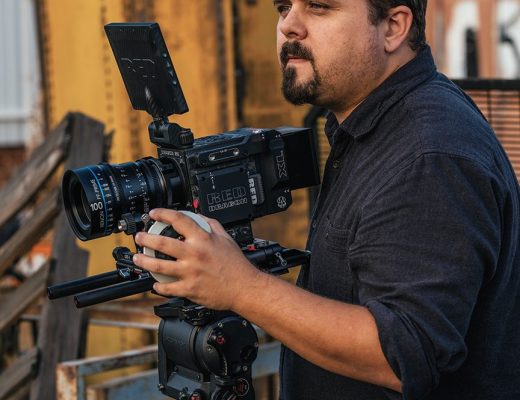I've always enjoyed the pace of Cine Gear more than NAB expo. Set on the Paramount LA backlot on street sets and amongst huge sound stages, it's smaller, more intimate, and a lot more cine-focused. It's one of the highlights of my year, and Cine Gear 2013 this last weekend was no exception. Here are a few things that caught my eye as I was browsing through the fake streets of New York. Read on…
Solid Camera Scatterbox
The name is not a misnomer…Solid Camera makes really solid stuff. And the new Scatterbox power-breakout system they were showing at Cine Gear is fantastic. It takes an Anton Bauer or Sony V-Mount battery plate, and adds a svelte little metal case with with two D-Tap and two 2-pin Lemo power outputs, as well as a 4-pin XLR output. It's available in 12 volt (and soon 24v) options, and will clip right on to the back of a RED or Sony F5/55 camera. Handy, and priced just under $600. Vine video link.
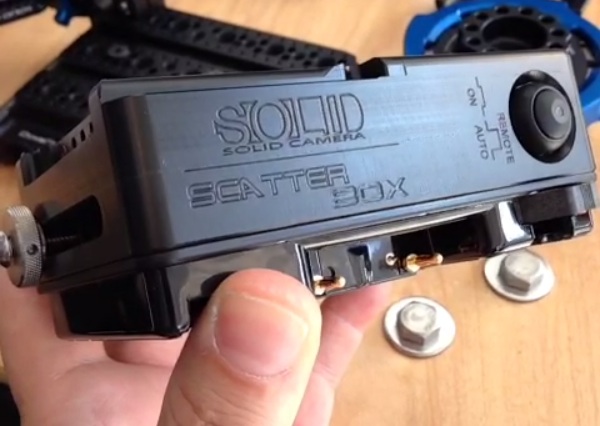
So one of the cameras shown at NAB 2013 was something from Radiant Images called Novo. Novo is essentially a re-housed, cinemized version of a GoPro Hero 3 Black. The talented people at ViewFactor engineered a solid metal case for the guts and sensor of a GoPro, centering the sensor in the middle of the body. But more importantly, they give you the option of locking it at 640 ISO sensitivity (no auto exposure!) and stuck a C-mount on the front. What this allows you to do is shoot 2K and 4K video with these tiny little cameras, with interchangeable C-mount lenses and real power options besides the GoPro batteries that drain so quickly. The GoPro “fisheye look” is gone, and you have proper iris control on the lens, instead of the GoPro's annoying auto exposure. You are still shooting to H.264 on MicroSD, however. So it's still a GoPro, albeit with many of the cine limitations removed. What's interesting, is that with a fast C-mount lens, you have surprisingly shallow focus for close objects…the images can look suprisingly cinematic. It also has a backfocus adjustment, so you have some macro options. And, there is a PL mount adapter, so you can mate ridiculously larger lenses to this tiny camera. The Novo is not available for purchase as of yet (maybe never), but you can rent it from Radiant Images.
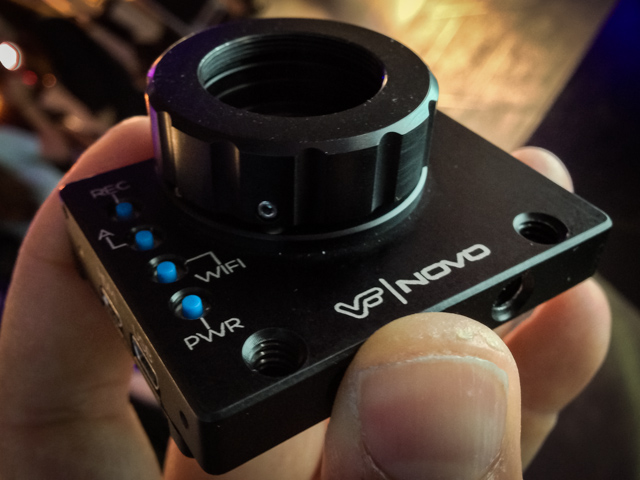
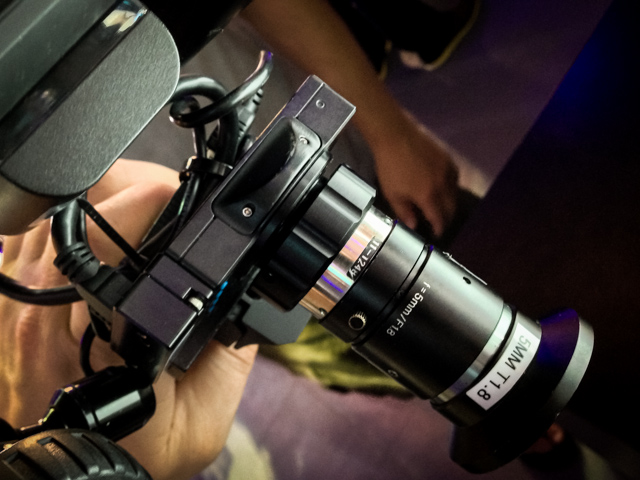
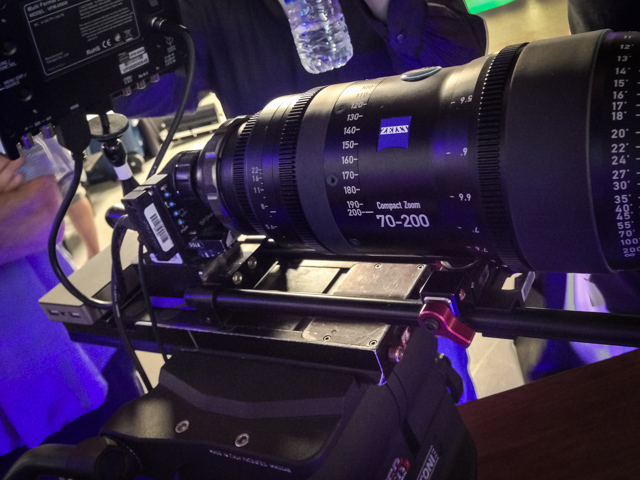
So in addition to showing the Novo at Cine Gear, Radiant Images was also touting something they are calling the Novo 2K Uncompressed camera. I was really excited to see this camera. Unfortunately, what I found was simply a block of aluminum, with what looks like a sensor inside. No power plug, no port, no buttons…it's not a camera yet. This is an idea. They may be close to something, but what they were showing at Cine Gear was nothing more than a camera shell. To be clear…the Novo 2K is not the same camera as the Novo based on a GoPro. This one appears to have a larger sensor…I was told by Radiant Images reps that it holds a Silicon Imaging sensor. The only Silicon Imaging sensor that I'm aware of is the 2/3″ sensor in the SI-2K camera, which has been out for years, and already is setup to shoot tethered uncompressed. That's the camera they shot Slumdog Millionaire on, as well as 127 Hours. So it could be that this is simply a re-housed SI-2K camera. Or it could be a new SI sensor. Regardless, it's not a camera yet, at least they aren't showing one yet. We are told that output will be uncompressed, and I'm assuming they intend for you to provide the recording medium. In the past, that would be an annoyance, perhaps even a deal-breaker, but we now have some lovely low-cost SSD tethered recorders soon to market…hello Convergent Design Odyssey 7Q!
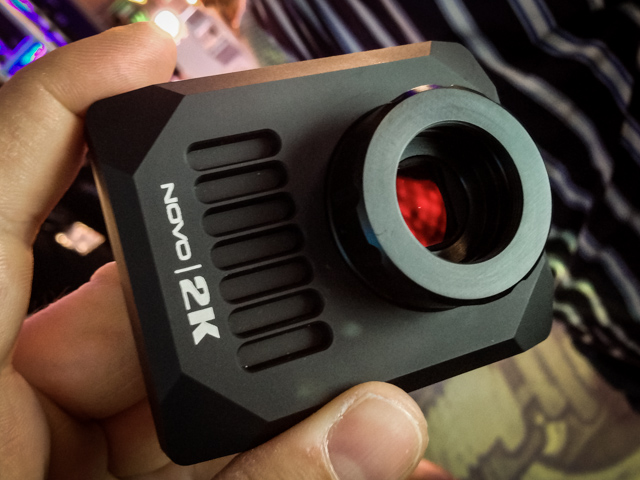
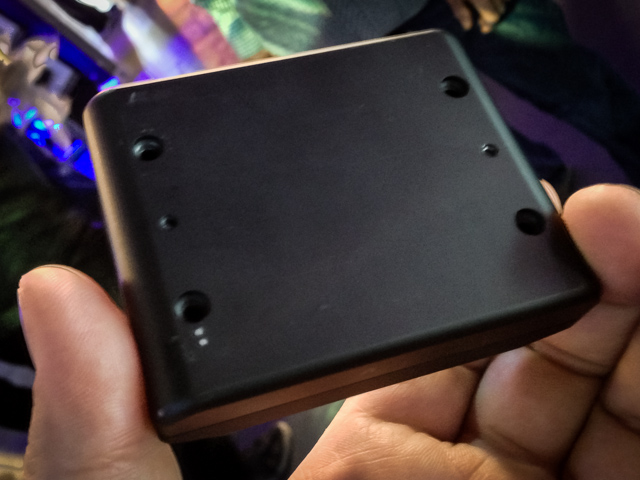
Convergent Design Odyssey 7Q Monitor & SSD Recorder System
Every Sony FS700 shooter I know is ridiculously stoked over this recorder. The Convergent Design Oyssey 7Q is an OLED monitor with the capability of being an SSD recorder. It has a host of inputs, and can be kitted out with dual SSD slots. They sell the monitor as a base unit, and then you can add recording codecs and such at additional cost (it comes with the 1080p 10-bit DNxHD codec standard, up to 60fps). We're told that (post-upgrade…see below) the FS700 can output 2K 12-bit linear raw data from the HD-SDI tap on the back…and the Odyssey will be able to capture that continously at up to 240 fps in Cinema DNG format. No more high-speed recording buffer; you can roll continuously. That's effectively a HUGE upgrade for the FS700 camera, both in capture codec and in FPS capabilities. The 7Q will also be able to record 4K images at up to 30fps, in 12-bit linear uncompressed DPX. The catch to both of these recording options is that you'll need to send your FS700 in for factory service and get the hardware/firmware upgraded to the tune of $400. Not a bad price, in my opinion. As far as the pricing of the Odyssey, it looks something like this for a common config:
$2295 Odyssey 7Q OLED monitor
$2390 (2) 480GB SSDs ($1195/each)
$1495 FS700 codec (2K RAW DNG + 4K DPX)
$6180 total
It is my understanding that you need both SSDs in the unit to record the 4K DPX datarate from the FS700…the dual SSDs are RAID'd to handle the high bitrates. However, DNG recording at 2K/24p should work fine on a single SSD. The highspeed recording may require dual SSDs. I ran the numbers on my bitrate calculator…Katadata reports that with dual 480GB SSDs shooting 2K RAW DNG at 24p, you'd be looking at around 67 minutes of record time. 120 and 240fps recording will obviously eat up your storage space very quickly. For 4K DPX recording with the same SSDs, you'd get a little over 8 minutes of footage. So yeah, media management will be an issue. And the cost of the media is not insignificant either. One more note; Odyssey also supports quite a few other recording formats, including ARRIRAW from the Alexa…all the codecs carry different price points. And if you're shooting something new every week, the codecs can also be rented instead of purchased outright.
There is a very long thread over at DVXuser where the Convergent Design folks are engaging in a detailed and open discussion about what the Odyssey can and can't do, and are even talking about future possibilities. One future possibility that they are discussing is taking the 2K raw data, doing a debayer, and recording that at 10-bit 1080p up to 60fps in the DNxHD format…handy for quick turnarounds. This tool is really looking like a solid investment for shooters, and as I saw at Cine Gear, it also appears to be a damn fine 7.7″ touchscreen OLED monitor with features like Waveform, Zebras, Histogram, and Vectorscope. You can find a full list of other specs and features at CG's site. And here is a Vine video of the 7Q.
DIY gaffer multi-tape holder
One of my favorite things about Cine Gear is the little doodads you find and the tips you pick up. Here's one that really excited me…it's just a simple DIY gaffer tape dispenser. I noticed it hanging off a soundie bag, and I had to take a look. The owner showed me how he simply took a small PVC pipe, tapped a hole in the end for a keyring and carabiner, and then wrapped a selection of gaff and paper tape around the pipe. It gives you a host of gaffer tape colors and sizes, all in a tiny little package that you can hang on your bag. A brilliant little DIY hack for camera assistants, in my opinion. Here's a Vine video that shows this little DIY doodad off.
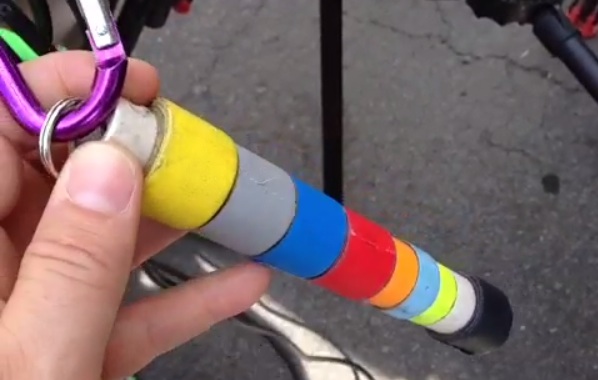
Shape Ultimate Handles, Zacuto EVF mount, Wood Ergo Grip
SHAPE was showing off something they are calling their Ultimate Handles. These are an upgrade to their previous one-button handles with rosettes, and now have a telescoping rotation control so you can position it for maximum operator comfort. I've never personally shot with SHAPE handles, but was really impressed with how strong and rock solid they feel, and how quickly they can be re-adjusted. Vine video link.
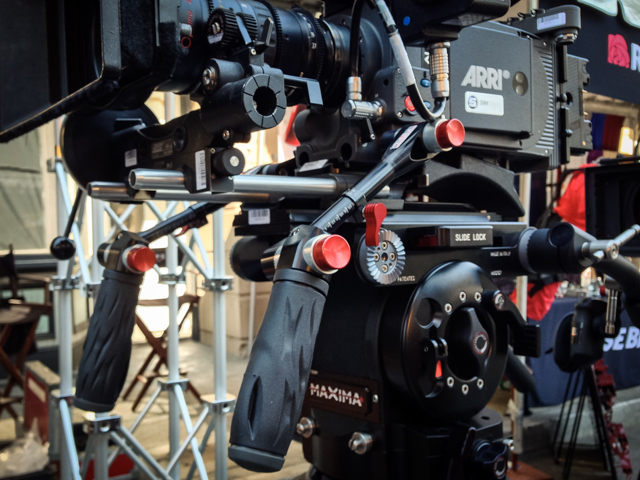
Zacuto was teasing a new EVF mount, that can quickly be adjusted to any position, and will work with any typical EVF or onboard monitor setup. As you can expect from Zacuto, it's really solid; their detail work in the knobs and machining is always on-point. Unfortunately these were right off the CNC for the show, so they didn't have pricing or availability information yet. Expect that soon. Vine video.
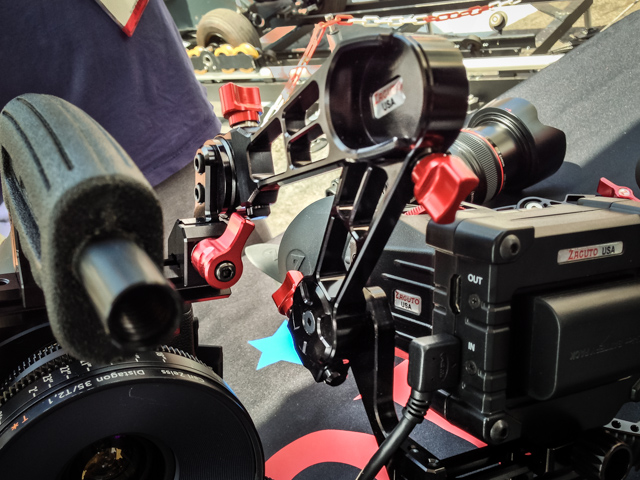
There are several people making Aaton-style wooden grips these days, and one of them that I found via Twitter is called the Wood Ergo Grip. These are made by @cinesota in the Phoenix area, and his finish work on the wood grip is exceptional. I've been testing one of his early models for about a month and providing feedback…and at Cine Gear he just showed me the finished walnut version of the grip, as well as another design that is closer to the shape of an old Aaton handle. Both are exceptionally well made, and he's pricing them very affordably. You can get them in a 15mm spud version, and also an ARRI rosette version. If you're looking to add a touch of class to your handheld camera rig, drop Ray a line at WoodErgoGrip AT gmail.com. Here's a Vine video that shows it off. Below is a shot of the two handle designs unfinished.

Paralinx Arrow+ wireless monitoring system
Paralinx has been selling a wireless video system called Arrow for some time, and at Cine Gear they were showing off the Arrow+ unit. Arrow+ expands on the 1:1 Arrow system to allow 1:4 broadcasting configurations; the transmitter can simaultaneously broadcast HD video to four different recievers. This allows you to have a client/agency monitor, Director's monitor, and AC monitor running all from the same simple wireless tap. It keeps the camera package untethered and mobile. I was really excited about this unit, so much so that I bought one on the spot. I bought the $1300 1:1 Arrow+ package, so I have the option of adding additional receivers later. And I also got the Shield unit, which is a metal mounting doodad for the Arrow that includes it's own HDMI port, so you don't wear out the port on the unit itself. They were also showing the Crossbow, which takes SDI signals and converts it into HDMI. The Crossbow also has a HDMI holder for the Arrow, so it's all nicely integrated. All around a slick and affordable solution for low-latency wireless video monitoring. Vine video link.
Axis 1 wireless follow focus
Speaking of wireless, the Hocus Products Axis 1 wireless follow focus (formerly known as Hocus Focus or HoFoPro) is now shipping. This is a nice robust wireless follow focus with simple operation, auto calibration and recovery of marks after power failure, and a damn affordable price point; $5000 for the kit. The control unit is powered by a Canon LP-E6 battery, and has a really well-designed battery door. Very cool unit, and probably the one I would buy if I was purchasing a wireless FF at this point.
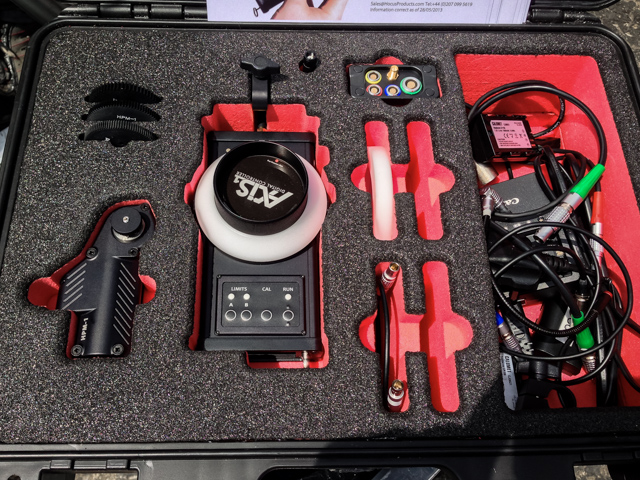
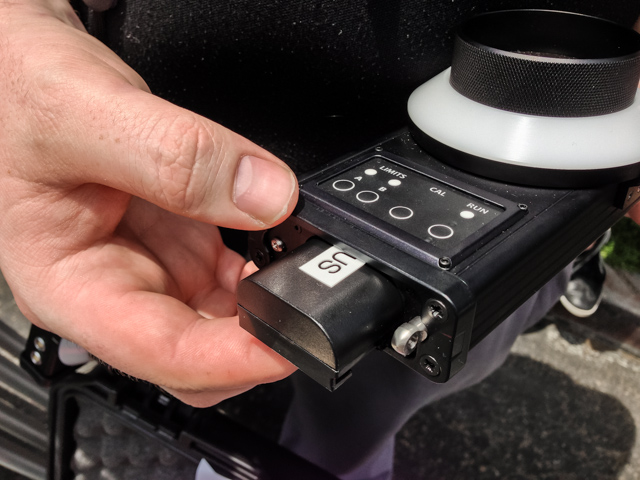
Fujifilm IS-Mini monitoring & LUT calibration box
Fujifilm was showing off the IS-Mini, an interesting little $1300 box that you attach to any monitor or TV, and it “fixes” that signal for proper monitoring, as well as providing a way to apply a LUT. It takes an HD-SDI signal and outputs both HD-SDI and HDMI. The IS-Mini is an extension of their CCBOXX (IS-100) tech, and can be integrated togehter. The IS-Mini box can attach to a laptop, along with a standard screen calibration probe like a Spyder, and Fujifilm's software automatically runs a calibration on the monitor and saves that calibration to the IS-Mini box. You then simply attach the IS-Mini between your camera signal and the monitor on each setup, and it continually corrects the color and contrast accuracy of the image displayed. They tell me that you can get cheap $500 plasma TVs to look very very close to color accurate. There is also a mode in the software that can run checks on existing calibrations, to confirm that the setup is still accurate. Oh, and the box can hold a 1D or 3D LUT for the monitor as well…so you can output an S-LOG image, for instance, and yet still feed the client a nice crunchy REC709 feed. Nice.
Schneider-Kreuznach Xenon Full Frame lenses
At NAB, Schneider Optics announced a new line of Xenon full-frame lenses. Currently the set includes a 35mm, a 50mm, and a 75mm. The lenses are all f/2.1, have a 100mm OD and 95mm thread, and will be available this fall in PL, Canon EOS, or Nikon mounts for around $4,000 each. They all have long 300mm focus rotation, and weigh a little over 3lbs each. Each has a lens support thread built in, and each has a 14-blade aperture for delicous round bokeh rendition. Schneider was showing these lenses at Cine Gear, and we also got a peek behind the curtain at their roadmap for the future of this line. We're told that after they ship this fall, they will also introduce a 25mm and a 100mm, as well as a wide; that wide will likely be an 18mm focal length. All the new lenses in the line will be f/2.1 as well, with perhaps the 18mm being the exception…that one may end up being an f/2.6 instead. Here's a little Vine action.
Bright Tangerine Misfit Mattebox
One of the pieces of gear that I looked for at NAB, but couldn't find in amongst the mayhem, was the Bright Tangerine line of matteboxes. They offer a couple different varieties, but the Misfit model is perfect for my style of shooting. It's got this really slick 2-stage design that expands in seconds to fit a third stage. It will clip on, and also rod mount, and they are built really solidly; both the carbon fiber structure and the hardware is beautifully made, and they are super lightweight. I love that the carbon fiber top flag on the larger model mattebox can be squared up for simpler packing into a gear case. Lovely mattebox system, and very fairly priced for the quality of the gear. This Vine video shows how the stages adapt.
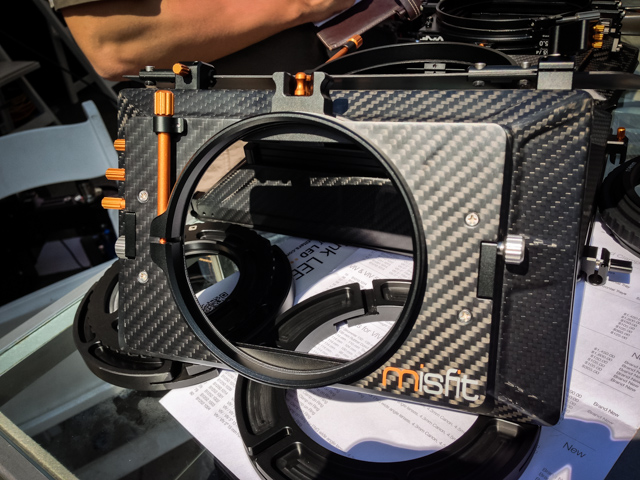
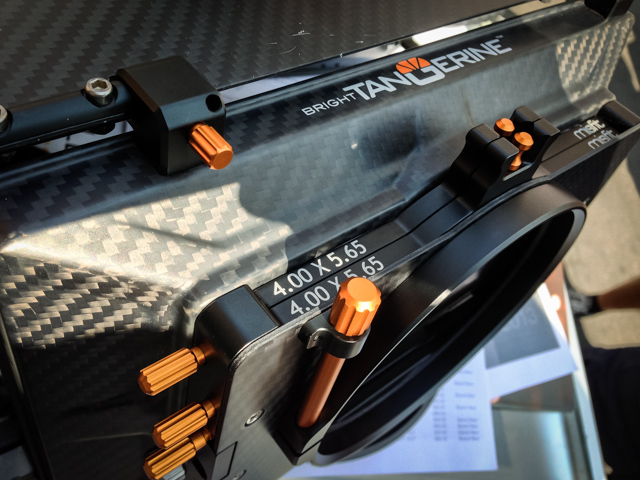
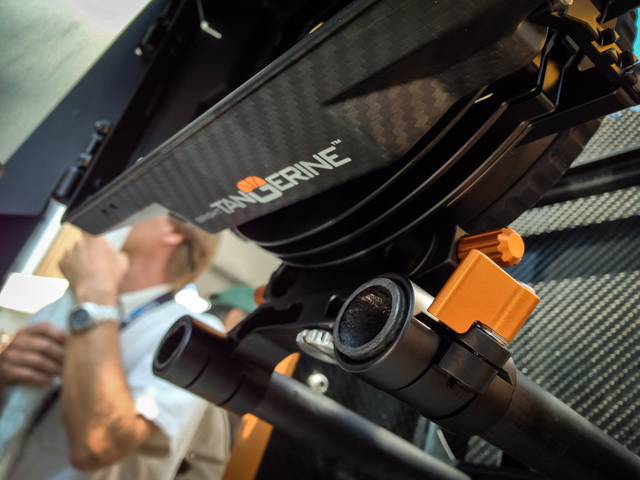
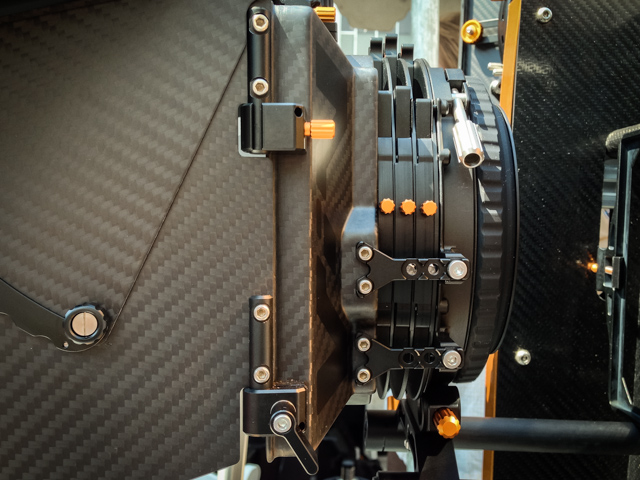
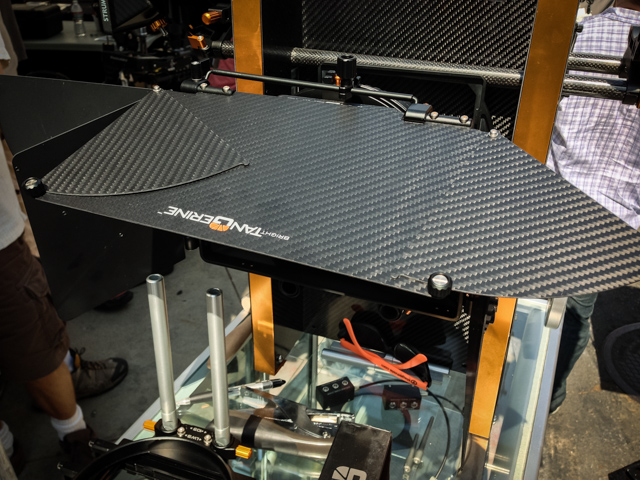
Formatt-Hitech new website
Finally, I wanted to drop a shout out to the Formatt-Hitech guys. They just launched a gorgeous new website that showcases their entire line of filters, and simplifies how the information is presented. I personally love their lightweight resin filters, and I've talked in the past about their awesome filter tray system that is perfect for DSLR and lightweight camera users who travel. Check out their new site at www.formatt-hitech.com

Filmtools
Filmmakers go-to destination for pre-production, production & post production equipment!
Shop Now